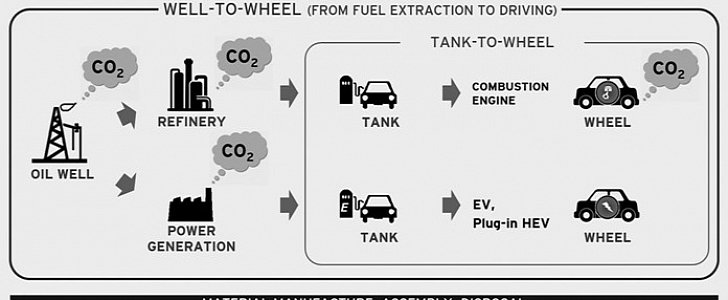Japanese manufacturer Mazda is currently the single global automaker to openly support continuous research and development of internal combustion engines (ICE) without some type of hybridization.
As most carmakers have decided to pursue electrification on a scale never seen before, Mazda is doing what it can to give the world the cold shower it thinks it needs.
Citing a study conducted by the International Energy Agency, Mazda says 84 percent of the vehicles sold globally will still make use of combustion engines in 2035. That’s reason enough to pour some more money into ICE.
Together with a group that has a direct interest in the proliferation of ICE powertrains, the Kingdom of Saudi Arabia Aramco oil company, Mazda announced on Wednesday the creation of a joint research project.
The goal of the task force being set up is to make combustion engines more efficient, including by creation of a low-carbon fuel and the engines to use it. The two companies will be aided in their efforts by the Japanese National Institute of Advanced Industrial Science and Technology (AIST).
The announcement comes as another salvo in the war declared by Mazda on the automotive industry. The Japanese are pushing for the measurement of emission levels from a well-to-wheel perspective, an approach which would place electric vehicles in the same ballpark with combustion-engined cars.
Currently, emissions are being measured only for the time the vehicle is in motion and the engine running, resulting in the so-called tank-to-wheel emission levels. This approach does not take into account all the processes needed to manufacture and operate a car, from fuel extraction to manufacturing, shipping and driving, as Mazda’s proposed method does.
As part of the project, Saudi Aramco will create a special fuel that results in lower carbon dioxide emissions, while Mazda and AIST will work on creating the engine to burn it.
“The company believes it is no longer sufficient to focus solely on the tank-to-wheel phase and develop fuel-efficient engines and cars that emit low levels of carbon dioxide in road traffic,” said the company in a statement.
Citing a study conducted by the International Energy Agency, Mazda says 84 percent of the vehicles sold globally will still make use of combustion engines in 2035. That’s reason enough to pour some more money into ICE.
Together with a group that has a direct interest in the proliferation of ICE powertrains, the Kingdom of Saudi Arabia Aramco oil company, Mazda announced on Wednesday the creation of a joint research project.
The goal of the task force being set up is to make combustion engines more efficient, including by creation of a low-carbon fuel and the engines to use it. The two companies will be aided in their efforts by the Japanese National Institute of Advanced Industrial Science and Technology (AIST).
The announcement comes as another salvo in the war declared by Mazda on the automotive industry. The Japanese are pushing for the measurement of emission levels from a well-to-wheel perspective, an approach which would place electric vehicles in the same ballpark with combustion-engined cars.
Currently, emissions are being measured only for the time the vehicle is in motion and the engine running, resulting in the so-called tank-to-wheel emission levels. This approach does not take into account all the processes needed to manufacture and operate a car, from fuel extraction to manufacturing, shipping and driving, as Mazda’s proposed method does.
As part of the project, Saudi Aramco will create a special fuel that results in lower carbon dioxide emissions, while Mazda and AIST will work on creating the engine to burn it.
“The company believes it is no longer sufficient to focus solely on the tank-to-wheel phase and develop fuel-efficient engines and cars that emit low levels of carbon dioxide in road traffic,” said the company in a statement.

